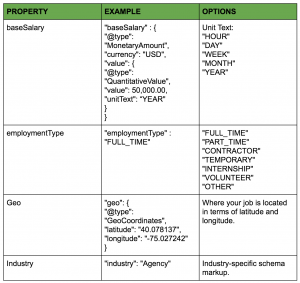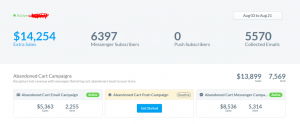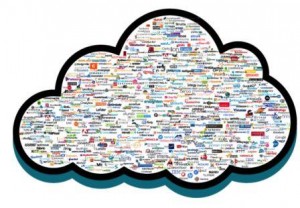Columnist Kevin Lee explains the ins and outs of header bidding in programmatic display and how it will make its way into other forms of media.
 Header bidding is all the rage in the programmatic ecosystem at the moment, and it signals a significant shift in the way advertising is bought and sold.
Header bidding is all the rage in the programmatic ecosystem at the moment, and it signals a significant shift in the way advertising is bought and sold.
Surprisingly, I predicted this evolution when I wrote “The Eyes Have It: How to Market in an Age of Divergent Consumers, Media Chaos and Advertising Anarchy” in late 2006 or 2007 (Yikes, 10 years ago). However, I mistakenly predicted that the winner in programmatic auction-based media would be eBay, using a media definition specification set that all sides could agree upon.
These days, when I say “digital advertising,” you may think web-based media and ad opportunities, display, social, search, native and video/audio advertising. The digital media landscape is being remade with the evolution of programmatic advertising and header bidding.
For those of you who don’t know what header bidding is in programmatic display, I’ll do my best to summarize it before we get into how it will spread into other forms of media not generally thought of as digital.
Behind header bidding in programmatic display
In the pre-header bidding environment, the first bite at every impression was in-house sales, guaranteed inventory purchased via an insertion order (IO) directly from the publisher, normally through a sales rep and a sales team.
Only the leftovers made it to the programmatic ecosystem — and when the yield (eCPM) was generally lower due to lack of transparency on the source of the inventory and a shortfall of data to properly value the inventory at an impression level.
Then a funny thing happened: big data and retargeting hit the programmatic ecosystem. And all of a sudden, even if the publisher was hidden from the buyer and only category was provided, the data might indicate that this particular impression was very valuable, perhaps even more so than the revenue that impression would have garnered the publisher had it gone to the premium in-house advertisers.
Increasingly, the publisher was missing significant revenue opportunities by not giving the programmatic ecosystem an opportunity to bid on the impression before the ad-server decided if the in-house advertiser should get the impression.
Header bidding lets the internal and external advertisers fight over the same impression using big data and external data, such as retargeting pixels. If a particular user and impression are extremely valuable in the eyes of a programmatic buyer, then better to reserve other inventory for the in-house buyer/sales team and grab the best you can get in the real-time auction. But the mechanism to truly optimize didn’t exist ’til the header bidding infrastructure was built.
Now, let’s look at all the other forms of media that have “gone digital,” evaluating each for a similar header bidding environment.
1. TV and other over-the-top (OTT) video
Already over 42 percent of households in the US can be reached via addressable TV (the set-top box swaps out a performance-based ad for another, higher-yielding ad in real time), according to the Video Advertising Bureau. But addressable TV is different from programmatic because it’s sold by IO, not a real-time auction. Yet the household’s demographics, psychographics and buying patterns are all known to the system.
That makes set-top boxes as powerful, if not more so, than a computer playing video (Hulu et al). Media buyers can be assured that the impression opportunities are actual humans, not targeted by name, but based on nearly every other attribute.
If header bidding were implemented in the addressable TV ecosystem, a high bid would preempt both the original low-value advertiser and the addressable advertiser. Initially, only the impressions available to the distribution provider, not the network-placed TV advertising, would be available for the header-bid programmatic video. Even this change would remake video advertising, because the likelihood of your seeing ads you have no interest in drops dramatically.
2. Radio (satellite and online)
SiriusXM knows who you are; so do Spotify, Pandora, iHeartRadio and others. Like TV, we have an opportunity to move beyond context and category-level targeting to micro-targeting of small audiences that share common traits and behaviors.
That’s worth more to marketers, and therefore, it will yield more for the broadcasters and content creators.
3. Billboards/outdoor
Billboards/outdoor have gone digital but obviously don’t generally know who’s looking at them. However, the targeting parameters of location and time together are quite powerful.
The non-personal nature of the impression means that outdoor is more likely to remain programmatic (and programmatic premium) than fully header bid (until the retinal scan and facial-recognition systems are in place — if the governments don’t quash hyper-personalized place-based media).
4. Print
The ads in print are already delivered digitally, and for small-format magazines, the technology exists to bind in ad pages by audience. One step further is to let the magazine have the same level of personalization as direct mail.
One-to-one communication and the ads in the bound-in pages could be determined in an auction.
5. Video
Obviously, the biggest opportunity for header-bid ads is within the video category. Video is one of the few media types outside of search where the consumer is open to engagement with the marketing messages.
Video tells stories, and with the rise of programmatic video and header bidding, the stories can be tailored to the specific sub-audiences that the marketer is trying to reach (language, age, wealth and so on).
Perhaps the inertia in these categories will be too great for programmatic and header bidding to take off within 2017. But in the end, the increased revenue to broadcasters and content creators will drive programmatic and header bidding into new channels.
Some opinions expressed in this article may be those of a guest author and not necessarily Marketing Land. Staff authors are listed here.
Marketing Land – Internet Marketing News, Strategies & Tips
(37)
Report Post









